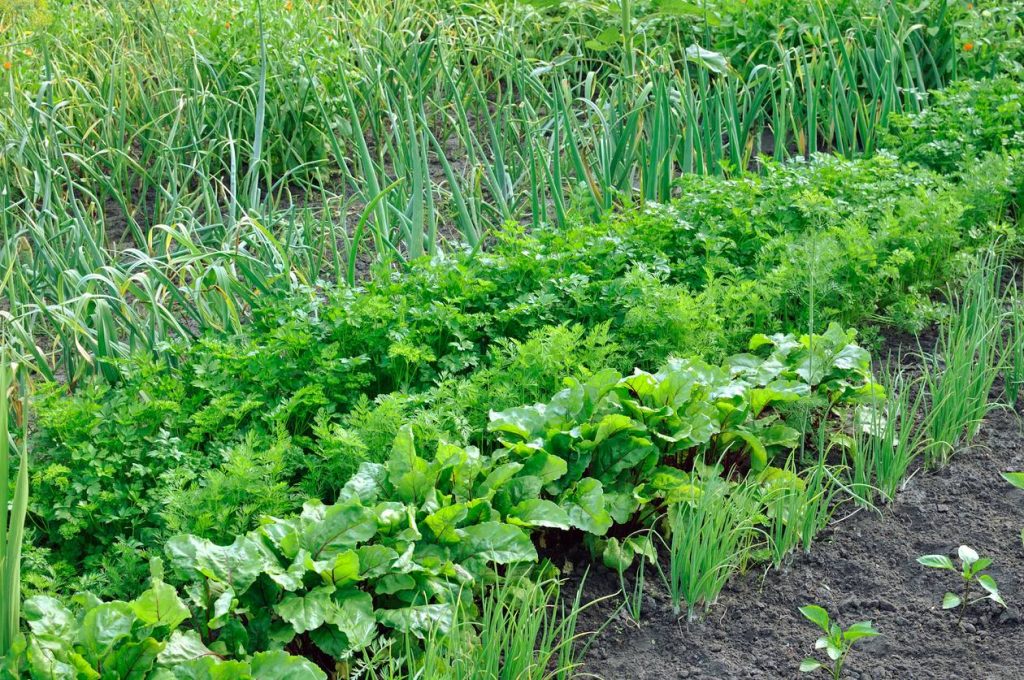This is the five year crop rotation plan I try to follow myself. I say ‘try’ because there are always crops that don’t fit in so neatly and with those my main aim is to space the crops as far apart as reasonable to avoid disease and deficiencies.
Potatoes
I start with the potatoes, the soil having been given a good amount of manure or compost the previous year. This reduces the need for fertilizers for the potatoes.
Green Manure
The potatoes are followed with a green manure crop of agricultural mustard.
The use of mustard as a green manure after the early potatoes hardens the cysts that contains the next generation of potato eelworm so preventing them from hatching easily. It should be noted that mustard is a brassica and this can cause problems on plots infected with clubroot.
Leeks & French or Broad Beans
When I got the dreaded clubroot I changed to applying some lime and rotovating it in to the soil using my Mantis tiller on lifting the first early potatoes in June / July. I then planted out leeks and French beans which are fast growing. On lifting the maincrop, lime that part of the plot and plant either field beans as a green manure or over-wintering broad beans.
Lime Follows Potatoes, Then Legumes
Following the potatoes, in the winter the soil is limed heavily taking the ph up towards neutral. Although the brassicas like a high pH, meaning lots of lime, L D Hills contended it was more effective the second year after application. For this reason I follow with the legumes, the peas and beans. The legumes fix nitrogen and by composting the haulm but leaving the roots in the ground, you add a little to the nitrogen available.
More Lime Before Brassicas
You can cover all the bases with this rotation by liming just before the brassicas as well. Now you know they will definitely have enough lime and the extra benefit of the legume’s nitrogen. Ideally extra manure is added but not at the same time. This goes on in early winter and the second liming goes on in late winter or early spring.
Sweetcorn & Curcubits
Following the brassicas, the next crops are the sweetcorn and cucurbits, squashes and pumpkins, marrows and courgettes.
They take up a fair amount of space so equalling the space for potatoes and brassicas. Organic growers in particular should grow as many legumes as possible. Apart form the health benefits from using them as a protein source, even if you are not vegetarian, they benefit your plot by producing lots of foliage to convert to compost and that additional nitrogen.
Other Roots & Onions
The final group is the root crops, carrots, parsnips and turnips and the onion family.
Of course it never works perfectly, but it does give a long spacing between the main crops of potatoes and brassicas.
The list below should help clarify. A lot will depend on your actual requirements when you set up and use a rotation plan. The important part of your crop rotation is to keep things apart for as long as possible.
Keeping a plan of your plot and marking in what has been planted where will prove of great value over the years because you are unlikely to remember what was planted where after two years.
- Potatoes, followed by mustard green manure and lime following (also leeks & Dwarf French Beans)
- Legumes, peas and beans followed by additional lime if required
- Brassicas
- Sweetcorn, squashes, pumpkins, courgettes etc
- Roots (carrots, parsnips) and onion family, followed by manure
Permanently Sited Crops
Run strawberries at the edge of the plots, looking to renew from runners every four years
Root Crops includes:
The Umbelliferae
Chenopodiaceae
From other families in the roots group:
NB: Turnips are actually a brassica but are not in the ground for long so unless clubroot is a massive problem can be safely grown out of the brassica group
The benefit of this four course rotation is the gap between each crop, especially the cabbages and potatoes, occupying the same ground is extended and the other crops in the rotation have more flexibility in position.
A lot will depend on your actual requirements when you set up and use a rotation plan. The important part of your crop rotation is to keep things apart for as long as possible. Keeping a plan of your plot and marking in what has been planted where will prove of great value over the years because you are unlikely to remember what was planted where after two years.
Articles & Information on Crop Rotation
- Crop Rotation – History & Principles of Crop Rotation
- Crop Rotation – Plant Families or Groups for Crop Rotation
- Crop Rotation – The Three Year Crop Rotation Plan
- Crop Rotation – The Four Year Crop Rotation Plan
- Crop Rotation – The Five Year Crop Rotation Plan
- Practical Example Crop Rotation
- Planning the Allotment Plot Crop Rotation Plan – New Plot
- Planning the Allotment Plot Crop Rotation Plan – Previous Year
- Planning the Allotment Crop Rotation Plan – What Potatoes to Grow
- Planning the Allotment Plot Crop Rotation Plan – Interim Legumes
- Planning the Allotment Crop Rotation Plan – Finished!




